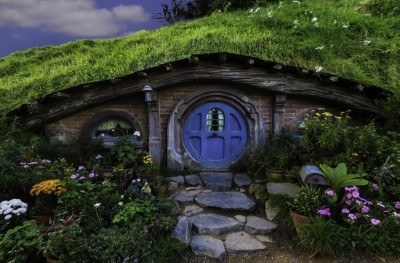
After many adventures, Bilbo moved from his independent life at Bag End to a retirement home. The House of Elrond in Rivendell provided him with a welcome and a safe space to age, write his memoirs and build his friendships before taking ship to the Undying Lands. It was his Last Homely House.
Tolkien’s hero is eager for excitement while nostalgically searching for home, and perhaps this is part of his appeal. We identify with him and our own smile dances at the corner of our mouth as we read of fellowship, feasting and music. Perhaps the longing for home is universal and grows with age, so it is no surprise that three quarters of care homes in England advertise themselves as homely places. It is easy to tap into this image.
But what would change if a care home acted on its own marketing? If the last house really was homely? People eat when they want in a home, but not in a school. Residents come and go as they please in a home, but not in a prison. Everyone sits round the same dining table in a home, not in a restaurant. There are so many challenges.
Let’s take a peep at the sleeping arrangements. Only a few of us grew up in a house with more than three bedrooms, and more than five is vanishingly rare. Anything bigger is a hotel, especially when the bedrooms are reached via a long corridor. Only fifteen percent of bed sales consist of single beds, and 21% of the population are under 18 years old, so we are buying doubles for ourselves and our children. In contrast, 84% of care home beds are less than four feet wide (see here for the evidence). Years ago, it was easy to book a hotel room with a single bed to save a bit of money, but nowadays, everyone wants a King size. Manufacturers have responded to the needs of sleepers with disabilities by providing doubles that rise and fall, that can be profiled to accommodate those who need help to sit up, and where each side operates independently. As a result, frailty and disability is no bar to spreading out in bed when sleeping alone or cuddling a loved one.
Few of us choose a single bed, even when we sleep alone. Homes and hotels have doubles, with singles being confined to small children, hospitals, boarding schools, barracks and prisons. Oh, and some residential care facilities. Perhaps readers can explain why bed preference changes with age. There are many business reasons for denying people the quality of sleep that they want but let’s not call it home when it isn’t.
It is home when I can sleep in safety. I will endure a few days of nocturnal observation in hospital if my life is threatened by Covid-19 or some other disease, but home is where I sleep in private and my bedroom door stays shut until I open it in the morning. This is, of course, different for parents whose young children may need to talk about a nightmare, but for everyone else, home means sleeping safe from intrusion. Indeed, to be half-awake and find a stranger in the room and the bedclothes in disarray is embarrassing or even terrifying, especially for people who have suffered abuse. Dementia, hearing loss and visual impairment increase the panic. Yet some relatives expect care staff to check the resident is breathing at two-hour intervals through the night. With that amount of adrenalin pumping through their bodies, it is no wonder that some residents catch up on their missed sleep during the day.
We call residential care facilities home, but there are so many ways in which this idea is fiction, a greater fantasy than Rivendell. It doesn’t have to be this way. Funders and architects can accommodate sex, affection and luxury. The idea of home should be more than a cheap marketing ploy, so managers, frontline staff and relatives can insist that it shapes how things are done in the kitchen, the lounge, the community and the bedroom. For nearly half a million people in England, residential care is their last refuge. It could become their last homely house.
To read a lengthy review of research literature on homeliness and care homes, click here.

Recent Comments